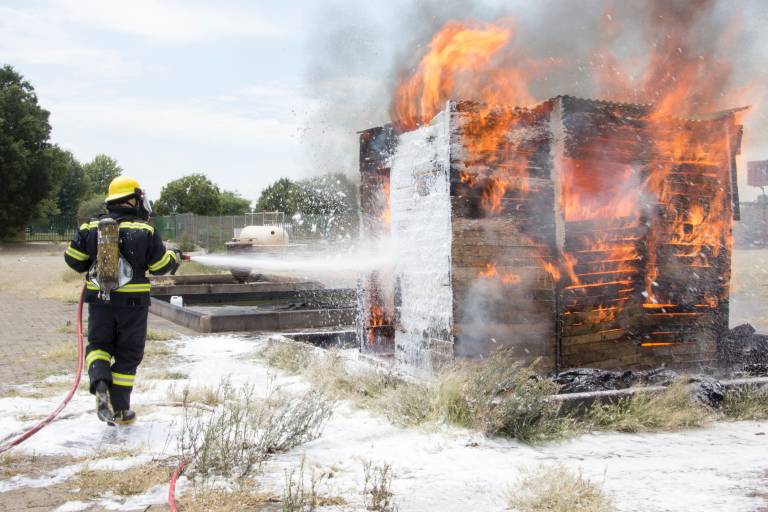Experts demand fire safety policy change over health impact of widely used flame retardants
16 March 2023
Newly published paper calls for a comprehensive review of the UK's fire safety regulations, with a focus on the environmental and health risks of current chemical flame retardants.

Leading environmental health experts have called for a comprehensive review of the UK's fire safety regulations, with a focus on the environmental and health risks of current chemical flame retardants.
The health dangers of substances meant to improve fire safety have prompted experts to demand a range of new measures to reduce risk.
Flame retardants are widely used to slow down or stop the spread of fire. They are used regularly in a range of products – from sofas and textiles, to building materials. However, hundreds of studies have reported on the adverse effects of these chemicals, many of which are bioaccumulative and have been linked to wide-ranging health risks including cancer, developmental disorders, and DNA damage.
The UK has some of the highest use of flame retardants in the world and we are all being exposed in our daily lives. Retardants have been found in a range of places – including homes, schools, offices, and vehicles. They have been found in air and dust, in food and drinking water, and on indoor surfaces and textiles, where they can be absorbed through contact with the skin. The authors add this exposure is particularly noted in young children, who crawl around and pick up objects.
They are also found in natural environments, including rivers, lakes, oceans and sediments, as well as in fish, mammals and birds.
Such widespread use has in part been attributed to the flame ignition tests that are a primary focus of current fire safety regulations. Experts have questioned whether these tests are fit for purpose in reducing fire risk and believe the government’s emphasis on these tests incentivises the addition of large amounts of fire retardants to products.
The experts say there is also “significant uncertainty” about the extent flame retardants contribute to fire safety, and that there is evidence that flame retardants exacerbate smoke and fire toxicity.
Dr Olwenn Martin, a member of the research team said: "In light of tragedies such as Grenfell Tower fire, serious concerns about the toxicity of smoke or fire debris are emerging. This is in addition to evidence of possible health effects related to exposure to flame retardants in our homes during our normal daily lives. We urgently need to revisit the balance between these health risks and the purported fire safety benefits of these chemicals."
Professor Ryan Wang, UCL Chemical Engineering said: "Fires containing halogen plastics can have severe health impacts due to the release of chlorine and fluorine containing compounds."
The evidence-based call to action, by a group of 13 experts, comes in the form of “A New Consensus on Reconciling Fire Safety with Environmental & Health Impacts of Chemical Flame Retardants”, published in the journal Environment International.
The authors set out six measures for the Government to urgently take in a thorough review of the need for chemical flame retardants, including an end to incentivising their use.
The authors instead call for incentivising industry to develop "benign-by-design" furniture and materials that are inherently less flammable.
They also call for developing a labelling system to track retardants’ use, allowing them to be identified and disposed of safely.
Also among their recommendations is the need to adopt a systemic approach to fire safety rather than a reductionist approach relying on ignition tests.
Links
- A new consensus on reconciling fire safety with environmental & health impacts of chemical flame retardants
- Dr Olwenn Martin profile
- Professor Ryan Wang profile
 Close
Close

